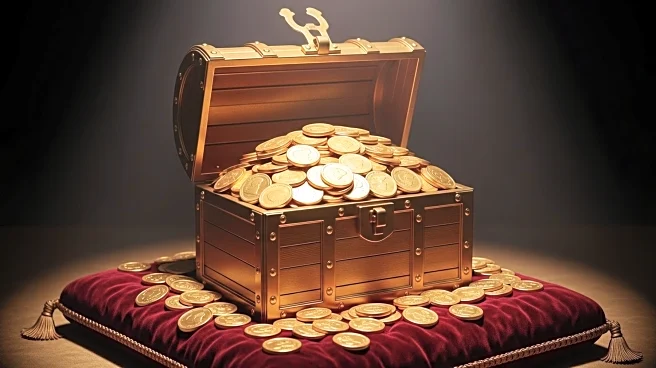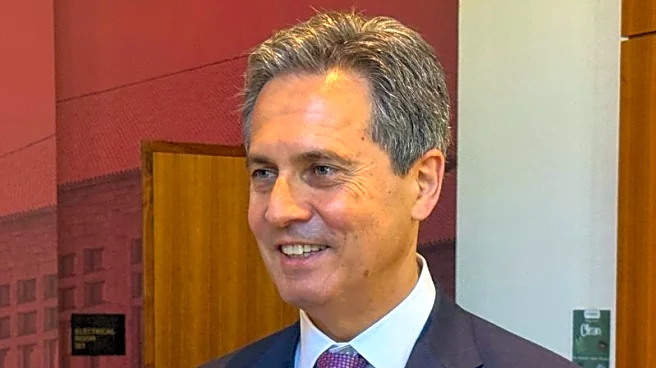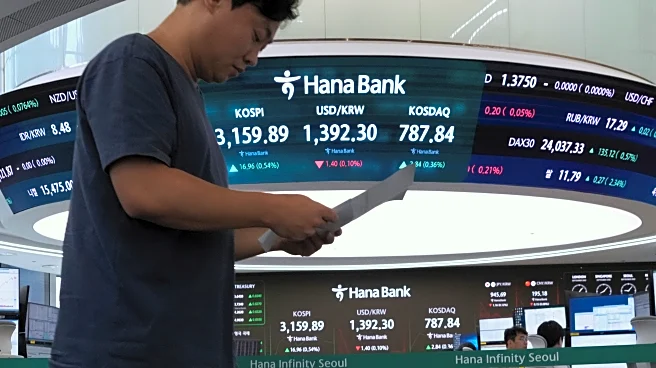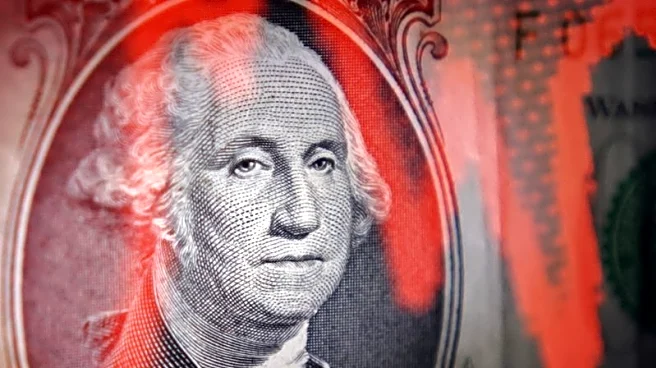What's Happening?
The price of gold has reached a new record high, climbing to $3,578.40 per ounce, surpassing the previous intraday record of $3,509.90 set in April. This surge comes as world shares mostly declined following the closure of U.S. markets for the Labor Day holiday. The increase in gold prices is attributed to a shift in investor sentiment away from the U.S. dollar, driven by President Trump's challenges to the U.S. Federal Reserve and other institutions. Silver prices also rose, reaching $41.46 per ounce, marking the first time it has surpassed $40 since 2011. Analysts suggest that the market's movement reflects a waning confidence in fiat currencies, with investors seeking refuge in precious metals amid geopolitical and trade tensions.
Why It's Important?
The record high in gold prices signifies a critical shift in investor behavior, highlighting concerns over the stability of the U.S. dollar and broader economic uncertainties. This trend could have significant implications for U.S. financial markets, as investors continue to move away from traditional assets like U.S. Treasuries. The rise in precious metal prices may also impact industries reliant on these materials, potentially increasing costs for manufacturers and affecting consumer prices. Additionally, the ongoing geopolitical tensions and trade disputes could further exacerbate market volatility, influencing global economic policies and investor strategies.
What's Next?
The U.S. Court of Appeals for the Federal Circuit recently ruled against President Trump's higher tariffs, which could lead to further legal challenges and potential appeals to the U.S. Supreme Court. This decision may influence future trade policies and impact market dynamics. Upcoming U.S. economic data releases, including durable goods orders and jobless claims, will provide insights into the economy's resilience amid these challenges. Investors and policymakers will closely monitor these developments to assess the potential long-term effects on the U.S. economy and global markets.
Beyond the Headlines
The surge in gold prices and the shift away from fiat currencies may indicate deeper concerns about the sustainability of current economic models. This trend could prompt discussions on the future of monetary policy and the role of alternative investments in a diversified portfolio. The legal challenges to President Trump's tariffs also raise questions about the balance of power between the executive branch and judicial oversight, potentially influencing future trade negotiations and international relations.













